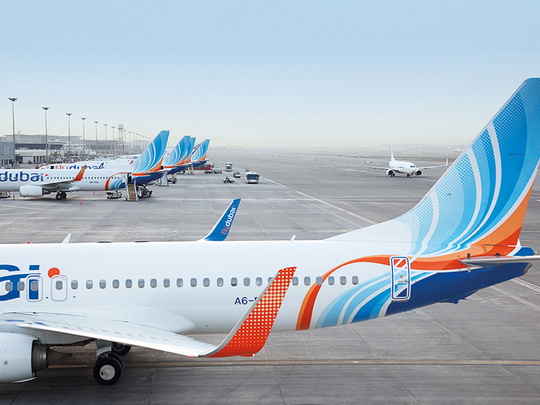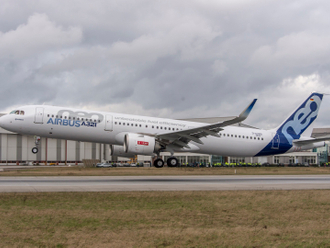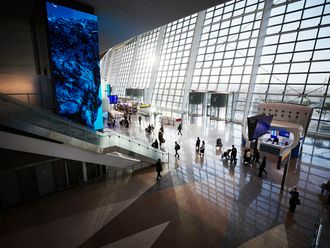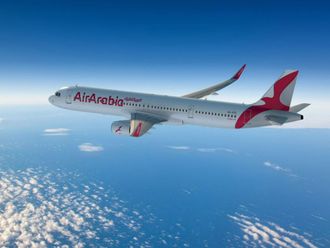
Dubai: Flydubai reported on Tuesday Dh316.8 million in losses for the first half of 2018 even as the budget carrier’s revenues increased by 10 per cent.
The losses are more than twice the Dh142.5 million loss recorded in the first half of 2017, and come as fuel costs jumped 35 per cent year-on-year, leading to a Dh175 million hit on flydubai’s earnings.
The carrier said in a statement that rising fuel costs have put pressure on operating costs during the first half. It added that the “economic and geopolitical climate remains challenging, dampening demand for travel,” and that a stabilisation in yields has not been able to offset the impact of higher fuel costs, rising interest rates, and a stronger US dollar (to which the UAE dirham is pegged).
Revenues for the first half of this year increased to Dh2.8 billion, as passenger numbers remained steady at 5.4 million.
Arbind Kumar, senior vice president of finance at flydubai, said that challenges in the operating environment are expected to continue hurting the airline’s financial performance, but that it remained focused on improving costs.
“The stronger dollar, rising oil price, and higher interest rates are expected to continue to impact our performance, and we will need to maintain a tight grip on the deployment of our capacity,” he said.
Kumar added that flydubai remained focused on optimising its network while “keeping our cost management plan under constant review.”
An increase in fuel costs this year has been widely cited by other airlines as well as industry experts including the International Air Transport Association as one of the key challenges affecting carriers’ financial performance.
For flydubai, fuel costs accounted for 29.2 per cent of total operating costs in the first half of this year, compared to 24.8 per cent in the same period last year.
Ghaith Al Ghaith, chief executive officer of flydubai, said he expected fuel costs to remain a challenge in the second half of the year.
“Although higher oil prices will continue to affect our operating costs and performance in the second half, pricing stability at the current level is also likely to stimulate demand for regional travel,” he said.
The CEO added that flydubai’s partnership with Emirates Airline as well as its investments will allow it to contribute to increasing connectivity from Dubai.
Under the codeshare with Emirates, 1.4 million passengers were jointly carried by the two airlines in the first half of 2018, with 83 destinations under the deal. The combined network of both carriers is on track to reach 240 destinations by 2022, flydubai confirmed.
From an operational perspective, the airline said it has undertaken a review of its network that resulted in the cancellation of operations to some destinations and investments in new routes.
Flights to 10 destinations were cancelled, while another two were suspended. The destinations, mostly in Iran and Saudi Arabia, include Bangkok, Male, Tehran, Al Jouf, Dhaka, Yanbu, and Voronezh, among others.
In terms of fleet, flydubai had 61 aircraft including six Boeing 737 MAX’s and 55 Boeing 737s at the end of the first half. The carrier will take delivery of seven new Boeing 737 aircraft in the second half of 2018.











